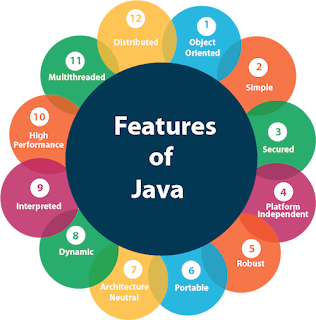Exploring the Future of Software Technology
Introduction:
In this blog post, we delve into the exciting world of future technology in software. As digital transformation continues to reshape industries, staying abreast of the latest trends and advancements is crucial. We will explore the top trends in future software technology, including artificial intelligence (AI), Internet of Things (IoT), blockchain technology, and cloud computing. Additionally, we'll provide insights on how to implement these technologies effectively.
Top Trends in Future Software Technology:
Artificial Intelligence (AI):AI is revolutionizing software development with its ability to mimic human intelligence. Key areas within AI include Natural Language Processing (NLP), Machine Learning (ML), and Deep Learning (DL). NLP enables software to understand and respond to human language, while ML empowers systems to learn from data and improve performance. DL, on the other hand, focuses on neural networks to achieve advanced AI capabilities.
Internet of Things (IoT):The IoT refers to the network of interconnected devices that collect and exchange data. In the future, IoT will have a significant impact on various domains such as smart homes and cities, industrial automation, and wearable devices. Smart homes will offer enhanced convenience and efficiency, while industrial automation will optimize production processes. Wearable devices will enable personalized and real-time data monitoring.
Blockchain Technology: Blockchain is a distributed ledger technology that ensures secure and transparent transactions. Cryptocurrencies and smart contracts are prominent applications of blockchain technology. Cryptocurrencies like Bitcoin and Ethereum offer decentralized digital currencies, while smart contracts enable automated and self-executing agreements. Decentralized Applications (DApps) leverage blockchain to provide innovative and secure solutions.
Cloud Computing: Cloud computing enables on-demand access to computing resources over the internet. Its three main service models are Infrastructure as a Service (IaaS), Platform as a Service (PaaS), and Software as a Service (SaaS). IaaS provides virtualized infrastructure, PaaS offers a platform for application development, and SaaS delivers software applications through the cloud. Cloud computing ensures scalability, cost-effectiveness, and flexibility in software solutions.
Implementing Future Software Technologies:
Incorporating AI in Software Development:
- Identify use cases for AI integration: Determine areas where AI can enhance software capabilities, such as natural language processing, image recognition, or predictive analytics.
- Select appropriate AI frameworks and tools: Choose frameworks like TensorFlow, PyTorch, or Scikit-learn based on project requirements. Utilize AI development tools and libraries to streamline the process.
- Train and optimize AI models: Gather relevant data, train AI models using appropriate algorithms, and optimize their performance through iterative refinement.
Utilizing IoT in Software Solutions:
- Identify IoT devices and sensors required: Understand the specific IoT devices and sensors needed to capture and transmit relevant data.
- Establish secure communication protocols: Implement encryption and authentication methods to ensure secure communication between IoT devices and software systems.
- Implement data analytics for IoT-generated data: Leverage data analytics techniques like machine learning to extract valuable insights from the vast amount of data generated by IoT devices.
Exploring Blockchain in Software Development:
- Understand the basics of blockchain technology: Familiarize yourself with the fundamentals of blockchain, including decentralized consensus, immutability, and cryptographic security.
- Select appropriate blockchain platforms: Choose from popular platforms like Ethereum, Hyperledger, or Corda based on the requirements of your project.
- Develop and deploy blockchain-based applications: Utilize smart contract development frameworks and tools to build decentralized applications and deploy them on the chosen blockchain platform.
Leveraging Cloud Computing in Software Solutions:
- Choose the right cloud service model: Assess your software requirements and select the appropriate cloud service model—whether it's IaaS, PaaS, or SaaS.
- Implement cloud security measures: Ensure robust security measures, including data encryption, access control, and regular vulnerability assessments.
- Optimize resource allocation and scalability: Leverage cloud management tools to optimize resource allocation, scale computing resources based on demand, and achieve cost efficiency.
Conclusion: Future technology in software presents tremendous opportunities for innovation and growth across industries. By embracing AI, IoT, blockchain, and cloud computing, businesses can stay at the forefront of digital transformation. Understanding these trends and effectively implementing them will enable organizations to develop cutting-edge software solutions that meet the demands of tomorrow's world.



Comments
Post a Comment